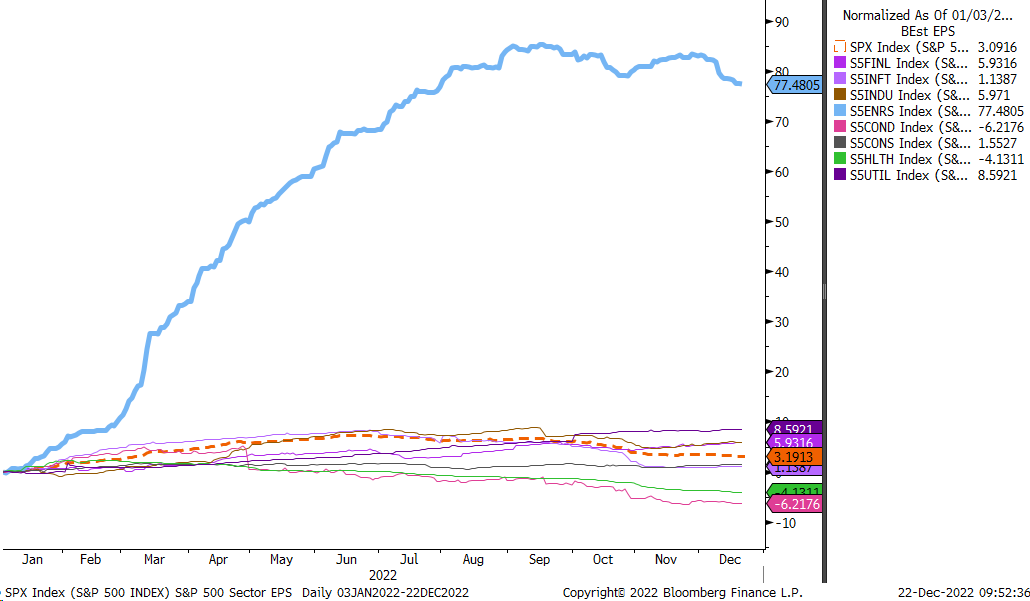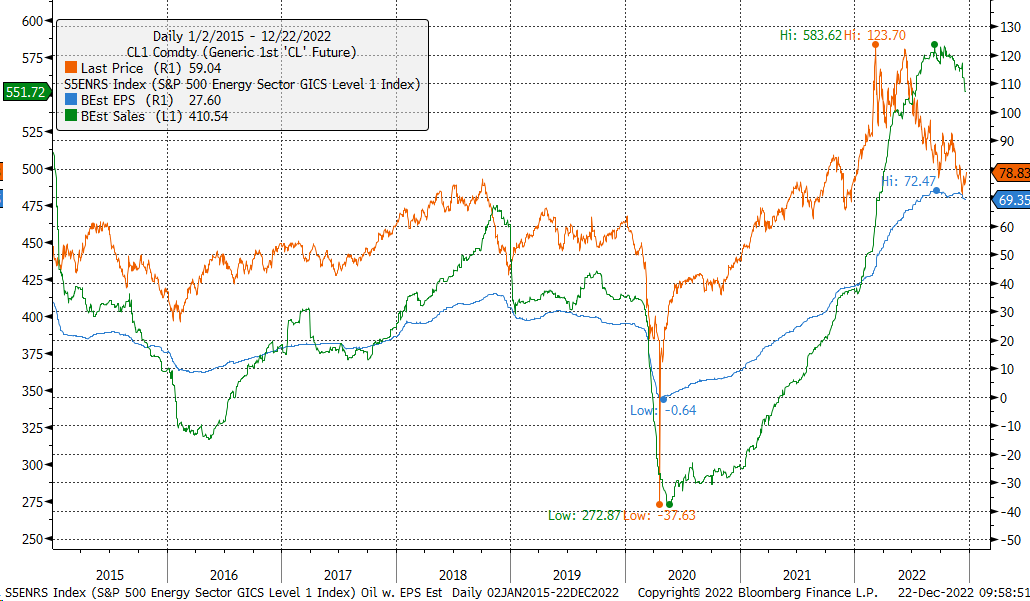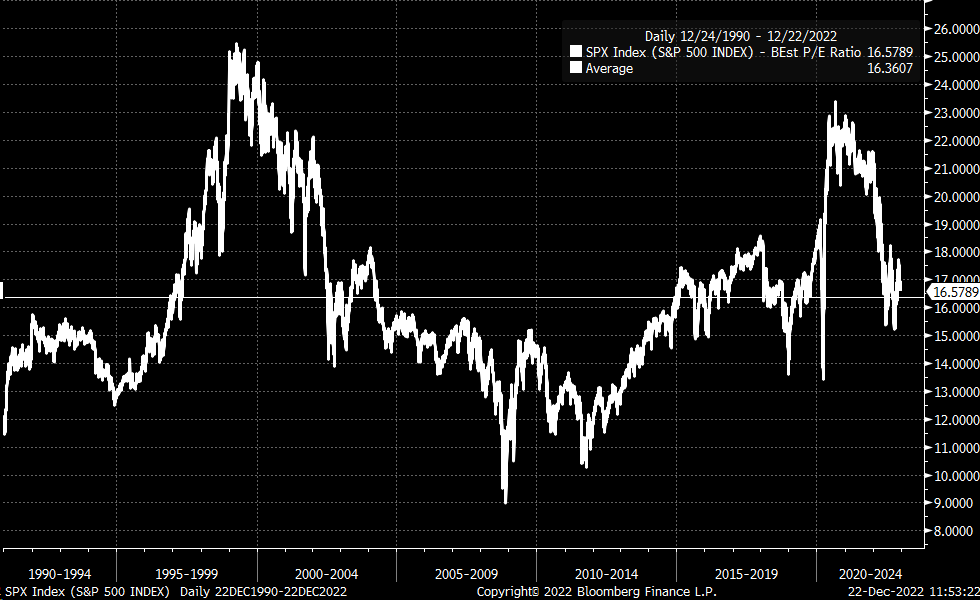- The energy sector helped to support the S&P 500 earnings estimates in 2022
- With oil down sharply, the energy sector is not likely going to be able to save earnings in 2023
- This means earnings estimates probably still have lower revisions coming
S&P 500 earnings for 2023 are likely to come under pressure as the economy slows, whether there is a recession or not. Slowing nominal growth and lower inflation will be enough to drive earnings lower in 2023.
On top of that, the one sector that saved the S&P 500's earnings in 2022 was the energy sector (NYSE:XLE). That is not likely to repeat itself in 2023 unless something changes meaningfully with the direction of oil. Over time the energy sector sales and earnings estimates follow changes in the price of oil. Oil is down a lot since it peaked in 2022.
The Energy Sector Saves 2022
In 2022, the 12-month forward earnings estimate for the energy sector rose dramatically. This significant increase in the energy sector earnings outlook was a big reason why S&P 500 earnings overall remained strong and are still expected to show some growth over the next twelve months. 
However, during past years, sales and earnings growth in the energy sector has been driven by changes in the price of oil. However, oil prices have fallen significantly since peaking at over $120 in June. Earnings and sales estimates for energy peaked in the middle of September and have started to follow oil and the price lower. So unless oil prices start heading higher soon, the energy sector's outlook will likely deteriorate further in 2023.
Without the energy sector providing a tailwind to S&P 500 earnings next year, one can wonder which sectors could help boost the overall market in 2023. There are few at this point because utilities seem to be the leader, and having a defensive sector like the utilities leading the S&P 500 earnings doesn't leave one feeling good about the prospects of the market as a whole.
New Leadership In 2023
This suggests that market leadership in 2023 will not be found in a sector rising but in a sector falling, and at this point, consumer discretionary (NYSE:XLY) is leading the charge, followed by healthcare. There has yet to be a big washout in technology earnings.
This will matter mightily heading into 2023 because technology represents the largest sector in the S&P 500 at almost 26%, healthcare represents 16%, financials represent 11.5%, and consumer discretionaries represents about 10% of the index. So if these estimates continue to trend lower, it is likely to weigh further on the overall negative bias of the index earnings.
This leaves investors overpaying for the S&P 500, which currently trades for around 16.6 times 12-month forward earnings estimates. Going back to 1990, the average PE ratio for the S&P is about 16.4. Given the uncertainty heading into 2023 around slowing economic growth and a Fed with a very tight monetary policy, paying an average PE ratio seems too high, forgetting everything else that goes into determining where the PE ratio should be.
For 2023 not to be worse than 2022, there will need to be new leadership that comes to the surface to help support S&P 500 earnings estimates, and at this point, there have been none to go to the surface, which probably means we haven't seen the lows in the stock market just yet, and the worst may be yet to come.
Disclosure: The author does not own any of the securities mentioned in this article.
